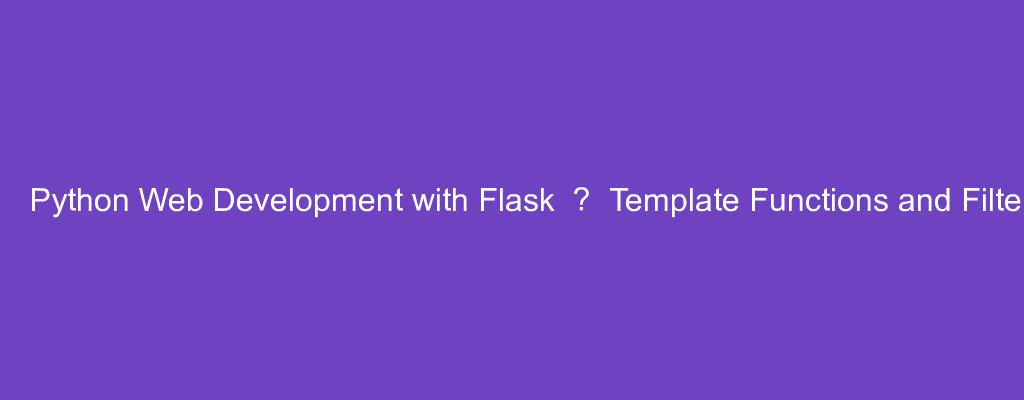Flask is a simple web framework written in Python.
In this article, we’ll look at how to develop simple Python web apps with Flask.
Templates
Flask comes with the Jinja template engine.
We can use it to render HTML.
It can access the config , request , session , g ,url_for , and get_flashed_messages contexts.
config is the current configuration object.
request is the current request object.
session is the current session object.
g us the request bound object for global variables.
url_for is the url_for function.
And get_flashed_messages is the get_flashes_messages function.
Standard Filters
We can use filters that are provided by Flask and Jinja.
For example, we can write:
app.py
from flask import Flask, render_template
app = Flask(__name__)
@app.route('/')
def hello_world():
user = {
'first_name': 'james',
'last_name': 'smith'
}
return render_template('index.html', user=user)
templates/index.html
<script type=text/javascript>
const user = {{ user|tojson }};
</script>
to add the user dictionary.
Then we pass the user object into the template and use the tojson filter with it to convert the dictionary to JSON.
So we get:
<script type="text/javascript">
const user = {"first_name": "james", "last_name": "smith"};
</script>
rendered in the template.
Autoescaping
We can disable autoescaping with the autoescape false block.
For example, we can write:
app.py
from flask import Flask, render_template
app = Flask(__name__)
@app.route('/')
def hello_world():
return render_template(
'index.html',
will_not_be_escaped='<b>will_not_be_escaped</b>'
)
templates/index.html
{% autoescape false %}
<p>{{ will_not_be_escaped }}</p>
{% endautoescape %}
The will_not_be_escaped isn’t escaped, so the raw HTML string is rendered.
So we’ll see the <b> tag rendered as bold text.
Registering Filters
We can register our own filters.
For example, we can write:
app.py
from flask import Flask, render_template
app = Flask(__name__)
@app.template_filter('reverse')
def reverse_filter(s):
return s[::-1]
@app.route('/')
def hello_world():
return render_template(
'index.html',
arr=[1, 2, 3]
)
templates/index.html
{% for a in arr | reverse %}
<p>{{a}}</p>
{% endfor %}
We register the reverse filter with the app.template_filter decorator.
In the reverse_filter function, we return the reversed array s .
Then in the template, we use the reverse filter and render it.
We can also write:
app.py
from flask import Flask, render_template
app = Flask(__name__)
def reverse_filter(s):
return s[::-1]
app.jinja_env.filters['reverse'] = reverse_filter
@app.route('/')
def hello_world():
return render_template(
'index.html',
arr=[1, 2, 3]
)
to do the same thing.
We put the filter in the app.jinja_env.filters dictionary.
Context Processors
We can add functions that we can run in templates.
To do that, we use the @app.context_processor decorator.
For example, we can write:
app.py
from flask import Flask, render_template
app = Flask(__name__)
@app.context_processor
def utility_processor():
def format_price(amount, currency=u'€'):
return u'{0:.2f}{1}'.format(amount, currency)
return dict(format_price=format_price)
@app.route('/')
def hello_world():
return render_template('index.html')
templates/index.html
{{ format_price(1.22) }}
We add th utility_processor function and applied the @app.context_processor to it.
Then inside it, we created the format_price function that returns a formatted currency string.
And then we return a dictionary with the function as the value of the format_price key.
Now we can call it in index.html to render a currency string.
Conclusion
We can call functions and use filters in templates with Flask.

